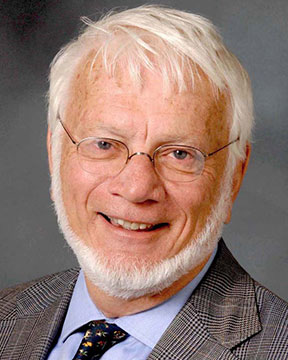ORALS
SESSION: SISAMTuePM1-R5
Amorphous Materials | Zehetbauer International Symposium on Science of Intelligent and Sustainable Advanced Materials (4th Intl. Symp. on Science of Intelligent and Sustainable Advanced Materials (SISAM)) |
| Tue Nov, 6 2018 / Room: Copacabana A (150/1st) | |
| Session Chairs: A. Lindsay Greer; Session Monitor: TBA |
14:25: [SISAMTuePM106]
Relaxation of Bulk Metallic Glasses After Cryogenic High Pressure Torsion Florian
Spieckermann1 ; Baran
Sarac
2 ;
Erhard
Schafler3 ; Viktor
Soprunyuk
2 ; Michael
Kerber
4 ; Jozef
Benarczik
5 ; Juergen
Eckert
2 ;
1University of Leoben, Leoben, Austria;
2Erich Schmid Institute of Materials Science, Leoben, Austria;
3University of Vienna, Wien, Austria;
4University of Vienna, Vienna, Austria;
5Deutsches Elektronen Synchrotron DESY, Hamburg, Germany;
Paper Id: 446
[Abstract] Bulk metallic glasses (BMG’s) combine high strength, hardness and elastic strain limit, they may show good soft-magnetic properties and excellent corrosion resistance as well as high homogeneity and isotropy. The viscous flow workability in the supercooled liquid region makes metallic glasses an excellent candidate for the next generation engineering materials. However, the limited ductility of BMG’s is detrimental for many potential applications. Recent results indicate that structural relaxations on the nanometer scale and their percolation may be involved in the formation of shear transformation zones (STZ) and shear bands that control the ductility of BMG’s. Considerable effects of aging/rejuvenation of BMG’s on their mechanical properties and on structural and dynamic relaxations were reported. Hence, there is fundamental scientific interest in understanding the interplay of structural and dynamic relaxations for equilibrated as well as non-equilibrated BMG’s. In the present study we use in-situ X-ray diffraction to study the structural rearrangements during annealing from 77 K up to the crystallization temperature of CuZr based BMG’s brought out of equilibrium by high pressure torsion performed at cryogenic temperatures. These structural changes are correlated with dynamic mechanical analysis (DMA) and differential scanning calorimetry to determine dynamic relaxations as well as crystallization.
SESSION: SISAMWedPM3-R5
Functional Materials | Zehetbauer International Symposium on Science of Intelligent and Sustainable Advanced Materials (4th Intl. Symp. on Science of Intelligent and Sustainable Advanced Materials (SISAM)) |
| Wed Nov, 7 2018 / Room: Copacabana A (150/1st) | |
| Session Chairs: Spomenka Kobe; João Paulo Sinnecker; Session Monitor: TBA |
18:05: [SISAMWedPM314] Invited
Novel Biocompatible Ni- and Cu-free Ti-based Amorphous Alloys: Thermal Stability, Corrosion Resistance and Apatite-forming Ability Mariana
Calin1 ; Somayeh
Abdi
1 ; Juergen
Eckert
2 ; Annett
Gebert
1 ;
1IFW Dresden, Dresden, Germany;
2Erich Schmid Institute of Materials Science, Leoben, Austria;
Paper Id: 30
[Abstract] Metallic glasses, also known as amorphous alloys or liquid metals, are relative newcomers in the field of biomaterials. They have gained increasing attention during the past decades, as they exhibit an excellent combination of properties and processing capabilities desired for versatile biomedical implant applications [1].
In the present study, we developed new Ti-based glassy alloys without any harmful additions, with potential for orthopaedic and dental applications. Ti<sub>75</sub>Zr<sub>10</sub>Si<sub>15</sub> and Ti<sub>60</sub>Nb<sub>15</sub>Zr<sub>10</sub>Si<sub>15</sub> glassy alloys were obtained by melt spinning and their crystallization behavior, corrosion resistance, and apatite-forming ability were investigated [2,3]. These compositions are marginal glass formers and cannot lead to bulk glass formation. Upon devitrification on heating, the Ti-(Nb)-Zr-Si glassy alloys exhibit nanophase composite microstructures, which lead to a remarkable improvement of mechanical properties. The corrosion and passivation behavior of the alloys in their homogenized melt spun states in Ringer solution at 37°C in comparison to their cast multiphase crystalline counterparts and to cp-Ti and beta-type Ti-40Nb was studied. All tested materials showed very low corrosion rates as expressed in corrosion current densities icorr<50 nA/cm<sup>2</sup>. Electrochemical and surface analytical studies revealed a high stability of the new alloys passive states in a wide potential range. The addition of Nb does not only improve the glass-forming ability and the mechanical properties, but also supports a high pitting resistance even at extreme anodic polarization. With regard to the corrosion properties, the Nb-containing glassy alloy can compete with the beta-type Ti-40Nb alloy. Simulated body fluid (SBF) tests confirmed the ability for formation of hydroxyapatite on the melt-spun alloy surfaces. All these properties recommend the new glass-forming alloys for applications as wear- and corrosion-resistant coating materials for implants.
References:
[1] A.L. Greer, Materials Today, 12 (2009) 14
[2] M. Calin et al., Mat. Sci. Eng. C, 33 (2013) 875
[3] S. Abdi et al., J. Biomed. Mat. Res. B, 104 (2016) 27.



















